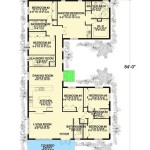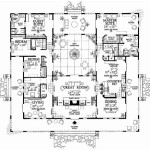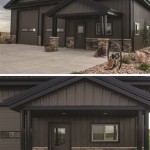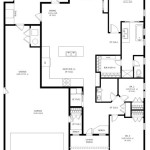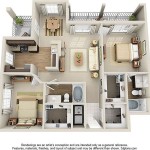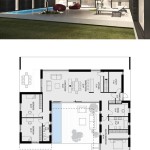Exploring America's Home Place: House Plans Rooted in Tradition
America's architectural landscape is a diverse tapestry woven from various historical influences, regional adaptations, and evolving lifestyles. At the heart of this tapestry lies the concept of "home place," a term imbued with notions of heritage, belonging, and connection to the land. Exploring house plans that echo this sentiment necessitates a journey through architectural styles that have defined American domesticity for generations.
The idea of the "home place" extends beyond mere physical structure. It encompasses the history of a family, the stories passed down through generations, and the tangible link to a specific location. House plans that resonate with this concept often prioritize functionality, durability, and a harmonious relationship with the surrounding environment. They may draw inspiration from vernacular architecture, regional building traditions, and the practical needs of those who inhabit them.
Understanding the nuances of these house plans requires an appreciation for the historical context in which they emerged. Early American architecture was largely shaped by European influences, adapted to the climate and available resources of the New World. As the nation expanded westward, regional variations developed, reflecting the diverse landscapes and cultural backgrounds of the settlers.
The Enduring Appeal of Colonial House Plans
Colonial house plans represent a significant chapter in American architectural history. These designs, originating from the 17th and 18th centuries, reflect the styles brought over by European colonists, primarily from England, but also from Dutch, Spanish, and French influences. These plans, though varied, typically emphasize symmetry, formality, and a sense of permanence.
Key characteristics of Colonial house plans include a rectangular or square footprint, a central front door, and evenly spaced windows. Common materials included wood siding, brick, and stone, depending on the region and available resources. Inside, the layout often featured a central hall with rooms flanking either side. Fireplaces were essential for heating and cooking, and the overall design prioritized functionality and practicality.
Several sub-styles fall under the Colonial umbrella. The Georgian style, for instance, is characterized by its symmetrical facade, pedimented doorways, and elaborate detailing. The Cape Cod style, on the other hand, is a more modest and compact design, typically featuring a steep roof and a central chimney. The Dutch Colonial style is recognizable by its distinctive gambrel roof, providing ample attic space.
Even today, Colonial house plans remain popular, often adapted to modern lifestyles. Contemporary interpretations may incorporate larger windows, open floor plans, and modern amenities while still retaining the classic appeal of the original designs.
Exploring the Charm of Farmhouse-Style House Plans
Farmhouse-style house plans evoke a sense of rural simplicity and connection to the land. These designs, born from the needs of agricultural communities, prioritize functionality, durability, and a comfortable, lived-in atmosphere. They often feature large porches, ample storage space, and a welcoming, unpretentious aesthetic.
A key aspect of farmhouse-style plans is their adaptability to the surrounding environment. They often incorporate natural materials, such as wood siding, stone foundations, and exposed beams. Large windows are common, allowing for ample natural light and views of the surrounding landscape. The floor plan typically emphasizes open spaces, creating a sense of connection between the kitchen, dining area, and living room.
The farmhouse aesthetic is characterized by its emphasis on practicality and comfort. Features such as shiplap walls, apron-front sinks, and vintage-inspired fixtures are common. Large kitchens are central to the farmhouse design, often serving as the heart of the home. Porches, both front and back, provide outdoor living spaces for relaxation and socializing.
Modern farmhouse designs often blend traditional elements with contemporary amenities. Features such as energy-efficient windows, smart home technology, and updated appliances are seamlessly integrated into the overall design. The result is a home that is both comfortable and stylish, while still retaining the rustic charm of the original farmhouse aesthetic.
The Allure of Craftsman and Bungalow House Plans
Craftsman and bungalow house plans represent a significant departure from the more formal styles of the past. These designs, popular in the early 20th century, emphasize simplicity, functionality, and a handcrafted aesthetic. They are characterized by their low-pitched roofs, wide eaves, and exposed rafters.
The Craftsman style is rooted in the Arts and Crafts movement, which emphasized handcrafted design and a rejection of mass-produced goods. Key features of Craftsman house plans include natural materials, such as wood, stone, and brick; exposed structural elements, such as beams and rafters; and large, covered porches. The interior layout typically features an open floor plan, with a focus on natural light and ventilation.
Bungalows share many of the same characteristics as Craftsman homes, but they are typically smaller and more compact. Bungalows are often characterized by their low-pitched roofs, wide front porches, and simple, functional layouts. They were designed to be affordable and accessible to the growing middle class, and they quickly became a popular housing option across the country.
The bungalow style is particularly well-suited to warmer climates, with features such as wide eaves and covered porches providing shade and protection from the sun. These designs often incorporate outdoor living spaces, such as patios and gardens, creating a seamless connection between the interior and exterior of the home.
Both Craftsman and bungalow house plans continue to be popular today, often adapted to modern lifestyles. Contemporary interpretations may incorporate larger windows, updated appliances, and energy-efficient features while still retaining the handcrafted aesthetic of the original designs. These styles offer a sense of warmth, character, and connection to the past, making them a timeless choice for homeowners.
Ultimately, the choice of a house plan is a personal one, reflecting individual preferences, lifestyles, and aspirations. However, by exploring the historical context and architectural characteristics of different styles, individuals can gain a deeper appreciation for the rich tapestry of American architecture and find a home that resonates with their own sense of "home place." The exploration of these plans allows for a tangible connection to the past, present, and future of American domestic spaces. This includes not only the aesthetic appeal, but also the functionality and adaptability of each style to meet the evolving needs of homeowners.
Consideration must also be given to the specific geographic location when selecting a house plan. Climate, topography, and local building codes all play a significant role in determining the suitability of a particular design. For example, a Cape Cod-style house plan may be well-suited to the northeastern United States, while a ranch-style house plan may be more appropriate for the southwestern United States. Furthermore, sourcing materials locally can reinforce the "home place" concept. Using locally-sourced lumber, stone, and other building materials can create a stronger connection to the surrounding environment and support local businesses.
In conclusion, exploring "America's home place" through house plans involves understanding historical context, regional adaptations, and personal preferences. Each style, from Colonial to Farmhouse to Craftsman, offers a unique perspective on American domesticity, providing a range of options for individuals seeking to create a home that reflects their values and aspirations. The concept of "home place" is not just about the physical structure, but also about the sense of belonging, connection to the land, and the stories that unfold within its walls.

Home Floor Plans House Layouts Blueprints

Home Floor Plans House Layouts Blueprints

Home Floor Plans House Layouts Blueprints

Home Floor Plans House Layouts Blueprints
Home Floor Plans House Layouts Blueprints

Home Floor Plans House Layouts Blueprints

House Plans Floor Blueprints

House Plans Floor Blueprints Home Designs

House Plans The Best Floor Home Designs Abhp

Identifying The 1950s Ranch House Interior As A Cultural Resource U S National Park Service
Related Posts

